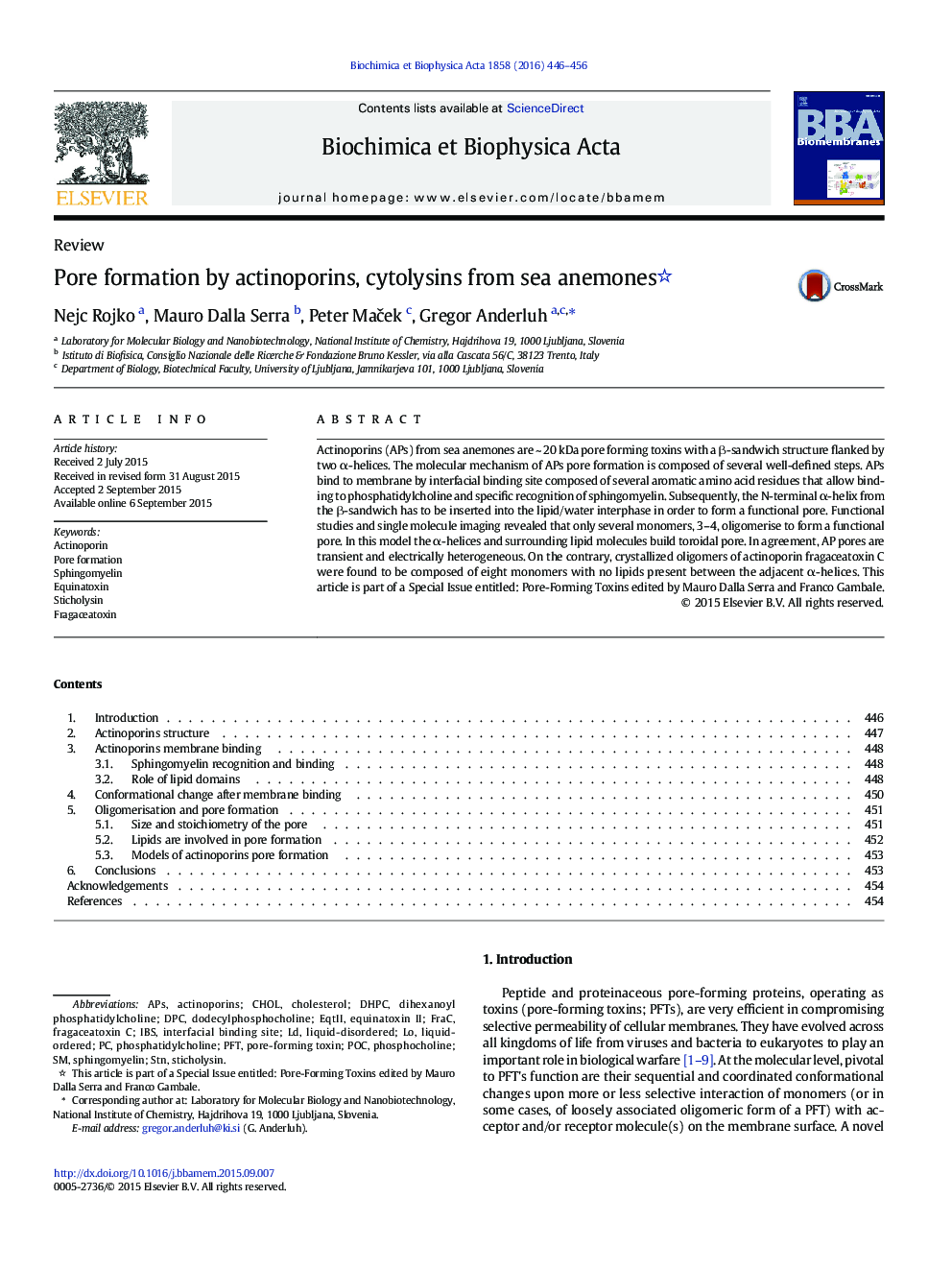| کد مقاله | کد نشریه | سال انتشار | مقاله انگلیسی | نسخه تمام متن |
|---|---|---|---|---|
| 1943992 | 1053170 | 2016 | 11 صفحه PDF | دانلود رایگان |

• Actinoporins are pore forming toxins from sea anemones.
• They are composed of β-sandwich flanked on two sides by α-helices.
• They can specifically recognise lipid sphingomyelin.
• The pore is formed by clusters of α-helices.
Actinoporins (APs) from sea anemones are ~ 20 kDa pore forming toxins with a β-sandwich structure flanked by two α-helices. The molecular mechanism of APs pore formation is composed of several well-defined steps. APs bind to membrane by interfacial binding site composed of several aromatic amino acid residues that allow binding to phosphatidylcholine and specific recognition of sphingomyelin. Subsequently, the N-terminal α-helix from the β-sandwich has to be inserted into the lipid/water interphase in order to form a functional pore. Functional studies and single molecule imaging revealed that only several monomers, 3–4, oligomerise to form a functional pore. In this model the α-helices and surrounding lipid molecules build toroidal pore. In agreement, AP pores are transient and electrically heterogeneous. On the contrary, crystallized oligomers of actinoporin fragaceatoxin C were found to be composed of eight monomers with no lipids present between the adjacent α-helices. This article is part of a Special Issue entitled: Pore-Forming Toxins edited by Maur Dalla Serra and Franco Gambale.
Figure optionsDownload high-quality image (305 K)Download as PowerPoint slide
Journal: Biochimica et Biophysica Acta (BBA) - Biomembranes - Volume 1858, Issue 3, March 2016, Pages 446–456